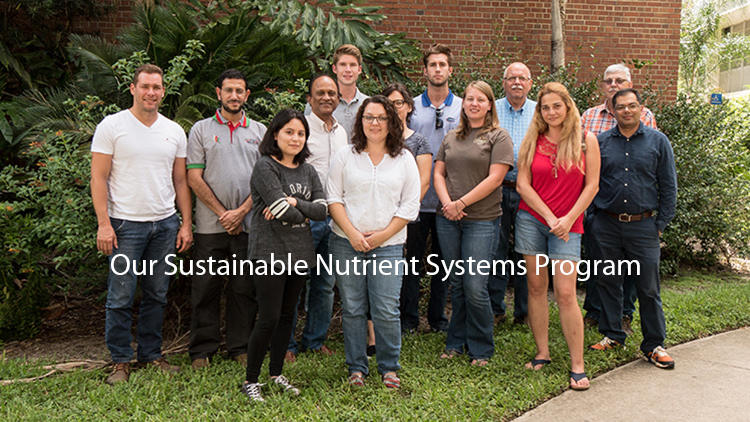Research
Although nutrient losses from agricultural fields have been documented to be significant, nutrient pollution can also originate from a variety of sources. The scope of this program, therefore, includes non-agricultural ecosystems and natural resources also. The research directly falls under the first two aspects of the "Management of Nutrients, Wastes and Pesticides", the largest Thrust Area of the Department. All research is reported under CRIS Project No. FAES-SWS-04835.
In a first of its kind, field research using dN15 techniques, in the semi-arid tropics of India, is being conducted to determine N-balance under both lowland and upland rice production systems, through the Indo-US Agricultural Knowledge Initiative. Simultaneously, water savings are also being documented. Modeling and up-scaling the information to watershed level are also being attempted through this project.
Documented increase of nitrate levels in the surface and groundwaters of the Suwannee and St. Johns River Basins has focused attention on efficient nutrient management in agricultural fields. A Ph.D. student is currently working on understanding evapotranspiration and water dynamics in shallow water table systems in the Tri-County Agricultural Area of the lower St. Johns Basin. The data is being modeled to complement the DSSAT protocols for sustainable crop production. Another Ph.D. student completed research work on N-uptake, drip irrigation and controlled-release N fertilizer in seepage irrigated potato production systems in the lower St. Johns Basin. Previous research in this program had assessed the N rates, fertilizer efficiency, and nitrate leaching in commercial crops, dairy and poultry production operations in these Basins. Results were used to develop BMPs for hay production in the Suwannee Basin, which were subsequently adopted statewide. This work also helped guide Nitrogen BMPs, effective N side-dress timing, root system characterization and cover crop rotations for minimizing N losses in potato production in the Tri-County Agricultural Area (TCAA) of northeast Florida. Another project funded by the St. Johns River Water Management District to study the potential phosphorus losses from potato fields was completed and project report submitted. The work in the TCAA has a direct impact on nutrient efficiencies and agricultural productivity and will potentially be used to guide regulatory and public policies in nearly 20,000 acres and approximately another 20,000 acres in south Florida under similar seepage irrigation, producing crops with over $350 million annually.
Over the past decade, phosphorus (P) application to Bahiagrass ranches in south Florida occupying has been restricted due to ‘High‘ soil test P values and the deeper root system of Bahiagrass. However, during the recent years, soil test P has been determined to be Low and P deficiency in Bahiagrass ranches suspected. Also the utility of a soil test has been questioned since only the surface soil sample is tested, although the roots can efficiently scavenge deeper depths for available P. A field project was completed through grant support, which confirmed P deficiency in the surface soil. As a result, a complementary new soil and tissue test protocol was developed and implemented through the IFAS Extension Soil Testing Laboratory and the statewide BMP guidelines were revised accordingly, impacting a total area of 2.5 million acres statewide and saving approximately $225,000 in P fertilizer. This research addresses crop nutrient requirements and soil and tissue testing aspects of the job responsibilities.
The relationship between soil and plant tissue nutrient concentrations and the corresponding elemental specific reflectance is being determined in another on-going statewide research project, when the samples are scanned under the Near Infra-red Spectrophotometer (NIRS). A post-doctoral associate and a M.S. student were recruited to collect geo-referenced soil and corresponding plant tissue samples from various locations and from various crops in the state. All samples were scanned in the 300-2700 nm spectral range. The data will be subjected to spatial statistical models to establish the relationships among spectral reflectances and plant essential elements. The ultimate aim of these series of studies is to obtain a real time sensor that can provide diagnostic nutrient analysis of agricultural fields at a watershed scale. Two studies to identify an improved soil extractant and a method to determine soil organic matter have been completed. A new study has been started this year to identify a replacement for the current lime buffer method preventing hazardous chemical waste residue. These research studies are examples of analytical methodology work, impacting all 67 counties in the state and potentially saving over $1 million annually through improved fertilizer recommendation and minimized analytical costs. ...Less







